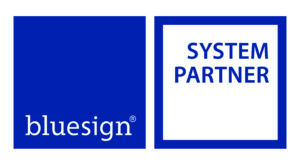09 Jun 2022
D&A Edge Polymer Officially Becomes bluesign® system partner
June 9, 2022

D&A Edge Polymer officially becomes bluesign® system partner. As a pioneer in the edge paint industry, D&A Edge Polymer actively participates in the well-respected sustainability certification in the fashion industry, and jointly promotes the reduction of the impact of products on the environment.

bluesign® system partner is one of the global leaders in the evaluation of textile chemicals. bluesign® SYSTEM defines a set of chemical criteria, including responsible use of resources, effective management of hazardous materials and elimination of all hazardous substances. In the meantime, the bluesign® SYSTEM encourages the system partners to continuously improve the safety of using chemicals, optimize processes regarding resource consumption and the product design enhancement in terms of environmental impact.
As part of the company’s sustainable development, D&A Edge Polymer successfully becomes bluesign® system partner which indicates that the whole production process has met the most strict standard listed on bluesign® CRITERIA, from raw materials input to finished products. This is to eliminates harmful substances from production process. D&A Edge Polymer continues to strengthen product research and development, quality control, after-sales service, etc., and strive to provide customers the better quality green products and services.

The bluesign® SYSTEM is built around five fundamental principles:
Resource productivity. Aims for maximum quality and added value for your product using minimum resources and the least possible environmental impact.
Consumer safety. Consumer safety includes not only that your textiles need to be of high quality and without health risks, but also the assurance that you apply all the principles of sustainability during your production process.
Air emission. Air emissions need to comply with strictly controlled limits along your entire production chain. Using low emission components and optimizing energy use reduces your CO2 load.
Water emission. Water emission control aims to feedback purified water into the natural cycle, causing the least possible pollution of rivers, lakes and seas. You can achieve this by using ecologically harmless components and by optimizing production and waste water treatment processes.
Occupational health and safety. This involves the health and safety employees in workplace. It means that weak points that might exist locally can be detected and improved in line with regulations.

